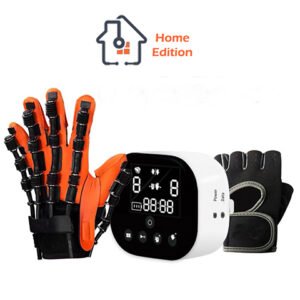postoperative Peripheral nerve block and physical therapy
In patients undergoing surgery, optimal pain management leads to improved perioperative outcomes, patient’s satisfaction with surgery, and a more rapid functional recovery. Recently, the use of multimodal pain management strategies has become increasingly common.. In particular, there has been a rise in the use of peripheral nerve blocking.
Initial physical therapy (PT) is crucial for improving functional recovery following total joint replacement (TJR) surgery. Adequate pain management is required for patients to participate in PT after TJR. Regional anesthesia in the form of a peripheral nerve block (PNB) can provide substantial pain control after TJR. This also minimizes the use of opioid medications. However, PNB lead to muscle weakness, minimising the efficacy of PT after surgery.
Physical therapists spend a great deal of 1-on-1 time interacting with TJR patients postoperatively. PT metrics are also part of many protocols for enhanced recovery after surgery. The romanian Journal of Anaesthesia and Intensive Care conducted a survey for their institution’s physical therapists to get their opinions on pain control modalities based on their experience working with patients who have undergone TJR. Furthermore, they asked the physical therapists what form of regional anesthesia they would prefer if they were to undergo a TJR surgery.
Based on the survey results, physical therapists at Rom J Anaesth Intensive Care believe peripheral nerve block hinders patient recovery and increase the risk of falls, of their beneficial effects on analgesia. When considering surgery for themselves, the majority of physical therapists indicated they would not want a nerve block. This is a curious finding in the face of evidence that PNBs provide excellent analgesia, facilitate PT, and improve recovery, while not increasing the risk of falls
Although much less common brachial plexus nerve block is another commonly performed procedure to control pain and facilitate healing yet it may also cause temporary or permanent nerve damage which will also necessitate thorough and intense rehabilitation exercises and much time spent with a physical therapist.
In most physical therapy centers there is a noticeable disproportion between number of physical therapists and number of patients. This disproportion in numbers poses a burden on the therapist and greatly effects the quality of the patient’s experience . The covid outbreak and social distancing has complicated the rehabilitation process even further. More so for patients who have underwent post operative nerve block and especially patients like those that has underwent lower limb peripheral nerve block this can pose a real challenge.
Consequent to the aforementioned obstacles a new trend in rehabilitation has emerged relying on robot assisted rehabilitation. This technology has made great leaps in the recent years. The technology has matured to a point where it has reached the clinical and consumer market alike. At SIFSOF we present you with a number of soft robotic rehab gloves like the SIFREHAB-1.0 and SIFREHAB-1.1 so that you no longer have to be bound by the limited availability of conventional physical therapy neither by reimbursement. The following list makes the core features of our soft robotic hand rehabilitation robots:
- Single finger training:
Studies have shown that single-finger training can significantly improve the rehabilitation effect, and more effective acupuncture for functional rehabilitation of damaged fingers is a new hope for hand functional rehabilitation. During use, the patient can also set the flexion and extension time separately according to the level of muscle tension to help the fingers flexion and extension.
- Hand air wave massage therapy:
is another characteristic function of SIFREHAB-1.1, which plays an auxiliary role in hand rehabilitation training. Before training, massaging for a few minutes can promote the circulation of blood and lymphatic tissues, accelerate the return of blood tissues, clear blocked blood vessels, promote blood circulation, and activate vascular cells; after training, it can enhance the vitality of cells, the absorption of body tissues, and promote the heart and brain blood vessels, so as to relieve soreness.
- Passive Flexion And Extension Training:
In passive mode, the affected hand wears recovery (rehabilitation) glove. Under the drive of SIFREHAB-1.1 , do flexion and extension training for 20 minutes each time, 2 to 4 times a day.
- Task-Oriented Training:
Robotic Rehabilitation Gloves: SIFREHAB-1.1, the patient’s affected hand grasps the water bottle (or ball or others) on the table in front of him close to his mouth and puts it back in place; Or close to another cup to a pour water and put it back it place. Or holding the door handle try to rotate the door handle and pull the door open, In the scene of daily home life, do action training 20 minutes each time, 2 to 4 times a day.
- Mirror Therapy for hand function rehabilitation
The healthy hand drives the affected hand, the hands move synchronously, activate the mirror neuron. The normal hand motor nerve pathway was copied to the affected hand, and promote the recovery of brain autonomy.
Reference: Soft robotic glove for combined assistance and at-home rehabilitation


